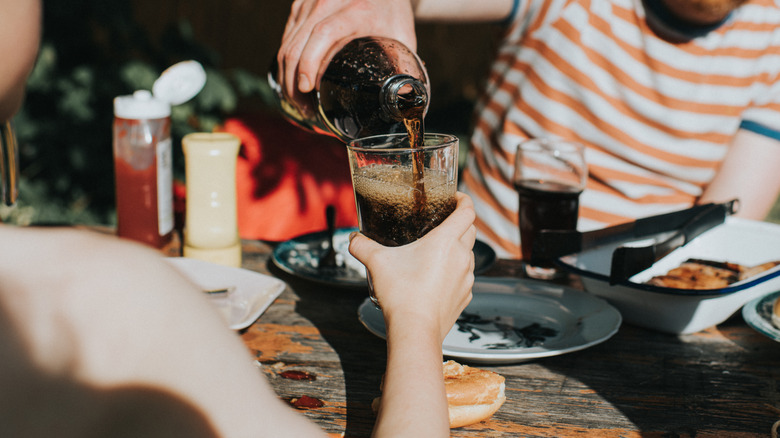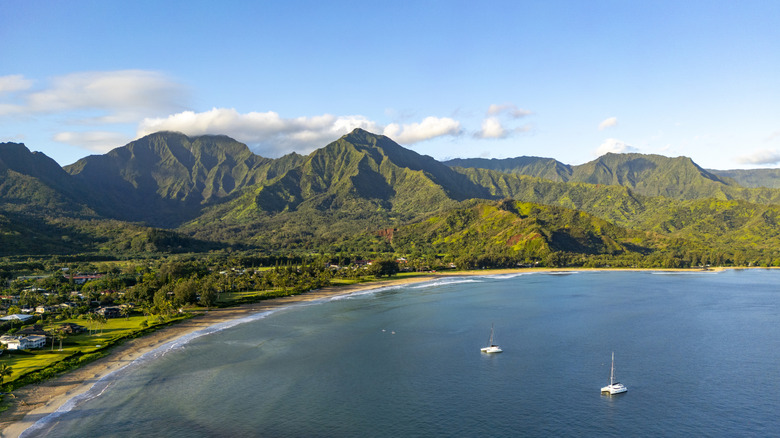This US State Consumes The Most Soda In The Country
Although carbonated beverages were circulating Europe in the early 19th century, Coca-Cola was first created in the United States in 1886. Americans have been drinking various types of soda ever since. From the country's oldest soda, a quaint ginger ale called Vernors, all the way to current seasonal flavors and brand collaborations transforming the industry, there's been a consistent market for these carbonated drinks. But of all of the U.S. states to consume this product, a larger portion of Hawaiian residents drink soda every day than any other state.
Various factors play into this, including the relatively low cost and ease of access to the drinks. There are also a number of myths about soda that have been perpetuated, including misinformation that makes them seem healthier than they are. In Hawaii's case, state research shows that excessive marketing to specifically lower-income populations is a key driving factor in consumption levels, leading to 76.4% of the population drinking at least one soda each day. States like Arkansas and Wyoming are not far behind at 74.2% and 73.2%, respectively. In fact, the whole country drinks a lot of these drinks, with all states reporting at least 44% of the population drinking soda every day.
Hawaii's complicated relationship with soda
While a large portion of Hawaiian residents drink carbonated sweet drinks every day, the local government and various organizations are concerned about the long-term effects of this habit. In total, 46% of Hawaiian teens drink at least one sugar-based beverage a day, and consumption of these beverages has been linked to high rates of obesity. As such, Hawaii has run a number of campaigns to educate the population in order to make informed drinking decisions. Meanwhile, the local government has also proposed taxes on sugar-sweetened beverages and strongly encourages locals to make water their drink of choice.
Interestingly, the whole state only has one main beverage canning factory located on Oahu. There, they produce around 1 million cans of beer, juices, and, of course, sodas per day. Canned soda is normally beveled on the bottom, but if you've been to the island state, you may have noticed that soda cans there also have a unique ridged neck. While this design was phased out in the 1980s to save on aluminum costs, it was more economical for the island to keep things as is. Thus, Hawaiian cans retain this design and are a bit bigger than cans in the rest of the U.S.


